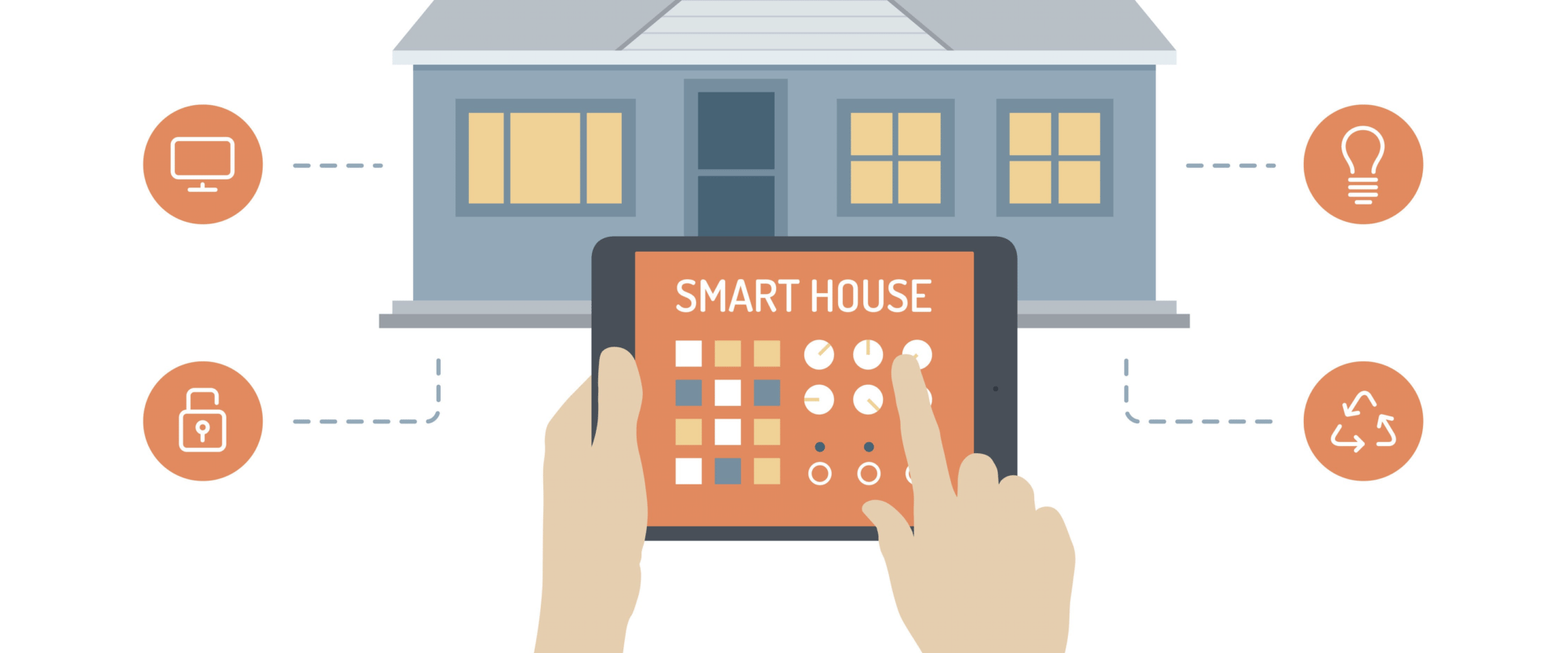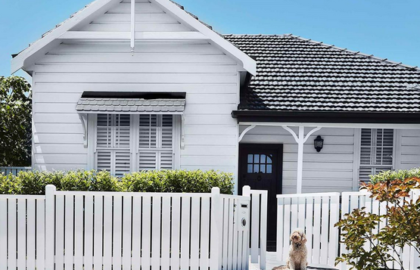
Smart home 101: All the things you need to know about this evolving technology.
It’s simpler than you think to adopt smart tech at home, even if you’re not renovating. This easy guide will send you straight to the top of the class.
Every room in your home is already filled with technology. Washers, dryers, routers, hair straighteners, laptops, sound systems, air conditioners — technology began to invade our homes decades ago. But the problem, to put it frankly, is that until recently it’s been ‘dumb’. All of it is disparate, working in silence, requiring your individual attention to turn on, turn off and adjust. Until now.
Smart home technology involves your home devices and appliances all having internet connectivity, essentially making the modem the heart of your home. Why is this so important? The connection not only makes these devices more user-friendly, it often makes them more efficient and gives you the ability to control them from anywhere in the world with an internet connection through a laptop, tablet or smartphone.
Almost all your home electronics and appliances have smart versions available now, including things you may not even have thought about yet. Your dishwasher, refrigerator, dryer, music system, air conditioner, and even smaller household items such as your vacuum cleaner, blinds, lights and smoke alarms, can be connected and become smart.
It’s not a fad that will blow away, either. According to Zion Market Research, the global smart home market is expected to grow at a rate of 14.5 per cent between 2017 and 2022. The market revenue of $30 billion in 2016 is expected to grow up to $68 billion by 2022. In other words, lots of people are buying smart home technology.
With that in mind, it makes sense to jump on board and invest in the right tech. There are two main factors to consider. First, investing in smart home technology may not add re-sale value
to your home unless that technology can be left behind when you move on, although it can still make a big difference to your lifestyle. Second, the functionality of your smart home technology is only as good as your internet connection.
THE BASICS
It doesn’t matter if you opt to hardwire your appliances or go with the easier wi-fi solution: your connection needs to be as fast as possible to ensure smooth operation. If you’re using wi-fi, invest in a great router – upgrade from the one that comes with your plan, as they’re usually not great. Thanks to solutions such as the Netgear ‘Orbi’, from $399 or Google WiFi, from $199, you can cover your entire property with ease and avoid weak or dead spots.
Thankfully, investing in smart home technology isn’t just for people building a new home. You can retrofit your current home without too many dramas, and you don’t have to cut any holes in your walls if you don’t want to. But there are still a few things to think about before you spend your hard-earned cash.
OLD VS NEW
In many instances, a lot of older homes were not designed to run a kitchen full of appliances, charge four phones and tablets, have the TV and computers running, and the air-con on at the same time. This can cause overloads, which can trip your safety switch and cut power to your home. That could mean a costly upgrade, so have an electrician check this out if you’re unsure.
Some structural details can also add complexity. Homes that were built in the ’70s or earlier have wiring and methods of construction that are not easily upgradeable. In many instances it’s easier
just to start again. Houses constructed in double brick can pose
a significantly larger challenge, especially when it comes to upgrading the wiring. This is where wi-fi is definitely your answer. While having all your smart home technology perfectly integrated and connected through your wall might look a lot sharper, it’s
not necessary and will be more expensive. You can upgrade your home to smart technology and potentially not have to make any structural changes at all with wi-fi-enabled devices.
The global smart home market is expected to grow at a rate of 14.5 per cent between 2017 and 2022.
WHAT TO LOOK FOR
Once you know how you’re going to get connected, the fun begins – filling your home with the latest smart home technology. There’s only one question to consider when purchasing new equipment: will it make your life better and easier? If the answer is yes in any way, the investment is a good one.
Smart home technology isn’t like your smartphone or tablet. You’ll probably use it most days, but you don’t want to have to think about it, you want it to do the thinking for you. Look at the features first and the aesthetics second. You’ll get far more annoyed with
a great-looking but hard-to-use home appliance than you will an average looker with amazing usability.
One final tip – with all of this, the chances are your smartphone will become a remote control for most of your appliances and electronics. Invest in a good one for added ease of use and leave your old one at home connected to wi-fi as a remote control for the house.
WHERE TO START:
SMART HOME ASSISTANT
Small, wi-fi compatible and able to answer even the curliest of questions, smart home assistants, like the ‘Google Home’, and Apple’s ‘HomePod’ also double as speakers. Voice-activated, they’re easy to set up and stylish enough to display.
APPLIANCES
Samsung’s wi-fi-enabled ‘Family Hub’ fridge, can show you what’s inside anytime, anywhere, thanks to an internal camera. It also allows you to order directly from Woolworths using the Woolies shopping app. Another option is the LG TwinWash washing machine system, with the ability to remotely start and monitor your load, plus track energy consumption and self- diagnose issues.
SECURITY
Smart security systems let you buy the ultimate system straight away, or add functionality one product at a time. The Nest system allows you to start with Nest ‘Cam Outdoor’ before adding the
You can upgrade your home to smart technology and potentially not have to make any structural changes at all with wi-fi-enabled devices.
‘Protect’ smoke alarm and carbon monoxide sensor and more. You can run Nest products via wi-fi or hardwired.
MUSIC
Wireless speakers mean much more flexibility for your tunes. The Sonos system, for example, includes streaming hubs as well as a variety of speakers for different rooms or situations. The speakers can work with your existing system, too.
Source: insideout.com.au








